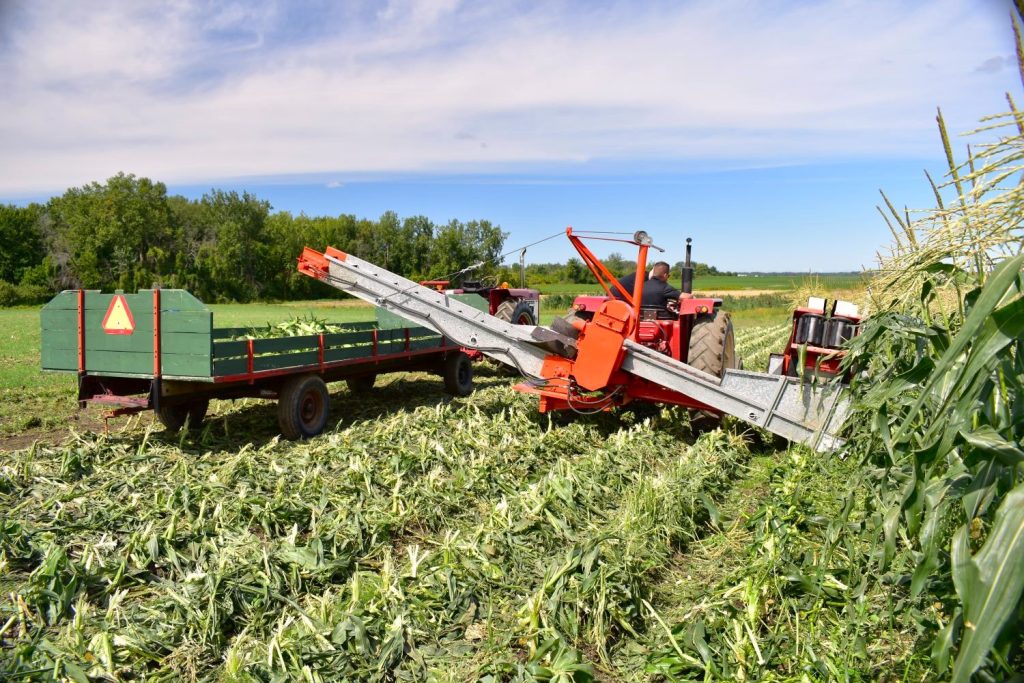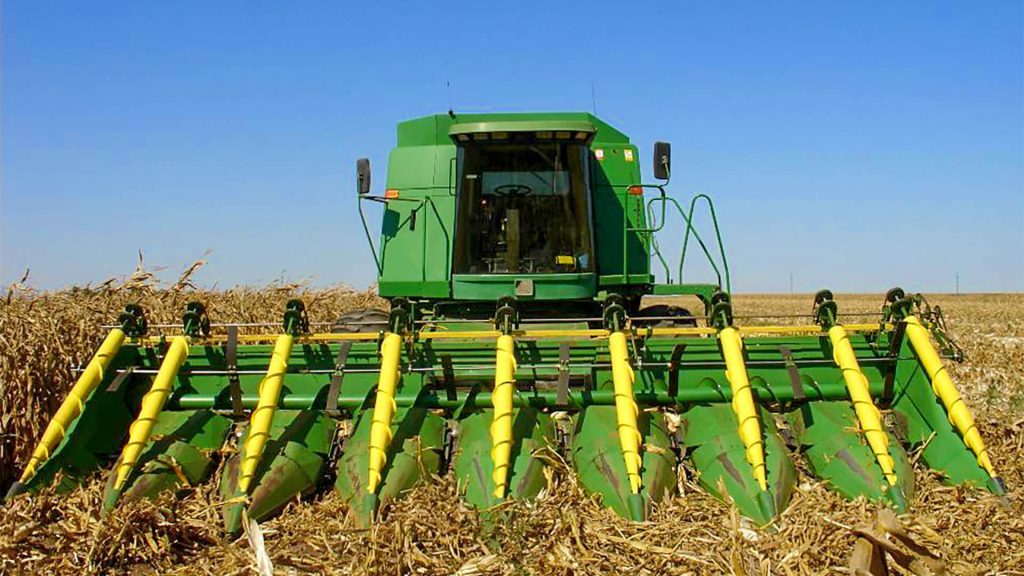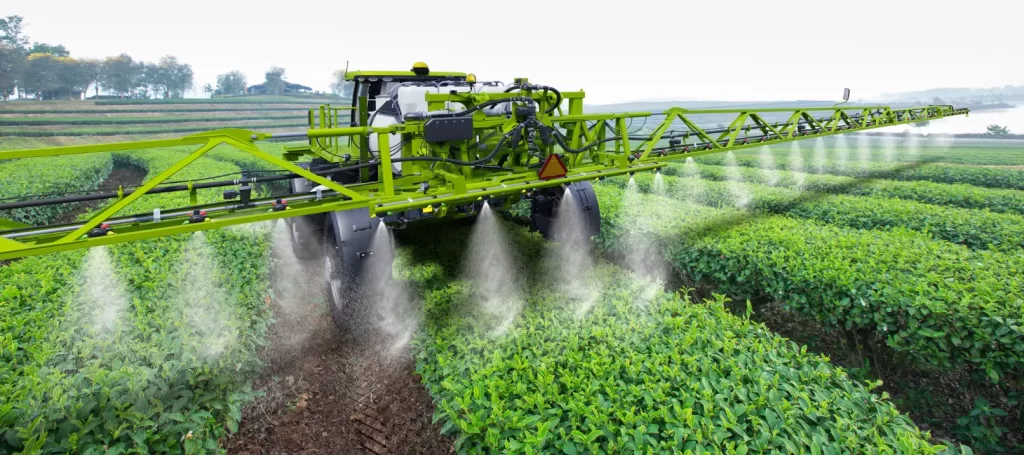In the context of the increasing diversity of current agricultural planting methods, the trend of Mixed planting (mixed Cropping) is becoming increasingly prominent. Farmers often need to take into account the rotation requirements of various crops such as corn, soybeans, wheat and carrots, which puts forward higher adaptability requirements for harvesting equipment. How to select a hybrid crop harvester that is truly capable of handling multiple types of crop operations has become a key issue in agricultural machinery procurement.
When making a purchase, one should not only pay attention to whether the harvester supports switching between multiple crops and quickly changing the header, but also consider its technical compatibility, such as whether it is equipped with peeling, threshing or conveying systems, and whether it can adapt to strip planting or different planting densities. In addition, terrain adaptation capabilities, subsequent service guarantees, and spare parts acquisition channels, etc., also directly affect the long-term benefits and usage safety of the equipment. Ignoring these problems can easily lead to waste of resources and operational and maintenance troubles.
The following text will analyze item by item the easily overlooked but extremely crucial checkpoints in the process of purchasing a hybrid crop harvester through a practical purchasing list, helping you make rational decisions from multiple dimensions such as functionality, maintenance, and service guarantees.
Contents
- 1 1. 5 Common Mistakes Farmers Make When Buying a Harvester for Mixed Cropping
- 1.1 1.1 Ignoring the adaptability of the combine harvester to multiple crops
- 1.2 1.2 Underestimate the matching requirements of the land conditions for the aircraft model
- 1.3 1.3 Excessive pursuit of “high configuration” while neglecting the difficulty of maintenance and use
- 1.4 1.4 Ignoring the grain loss rate and the cleaning effect
- 1.5 1.5 Future crop rotation or expansion plans were not taken into consideration
- 2 2.Recommended Harvester Configurations for Mixed Cropping
- 3 3.Practical Buying Checklist for Mixed-Crop Harvesters
- 4 Conclusion
1. 5 Common Mistakes Farmers Make When Buying a Harvester for Mixed Cropping
1.1 Ignoring the adaptability of the combine harvester to multiple crops
Question
Many farmers only focus on major crops such as corn or wheat when purchasing, but neglect the harvesting needs of rotational crops like beans and grains, resulting in poor performance of equipment on non-major crops.
Consequence
The efficiency of multi-crop switching is low, increasing the time cost of harvesting.
Some crops are prone to damage or have a high residue rate, which affects their yield and sales.
Some harvesting operations require additional equipment rental or purchase, increasing expenses.
Suggestion
Choose models equipped with “head-changing devices” or “modular adaptation platforms“. These models can quickly change the header or harvesting accessories according to different crops, significantly enhancing the adaptability flexibility and cost-effectiveness in mixed planting.
In addition, it is recommended to clearly list the crops that may be planted in the future in advance and make the selection based on the usage feedback from users in the same region.

1.2 Underestimate the matching requirements of the land conditions for the aircraft model
Question
Many farmers overlook the challenges that special terrains such as hills, wetlands and narrow plots pose to the chassis structure and passing capacity of harvesters, and only select models based on horsepower or the type of crop.
Consequence
During operation, situations such as the vehicle getting stuck, slipping, and the cutting head scraping occur frequently, seriously affecting the progress.
In some areas, machines are unable to enter or have difficulty turning around, resulting in low work efficiency or even inability to operate.
Suggestion
Be sure to evaluate the following dimensions before purchasing:
Moisture content and moisture content of the plot (determining whether it is wheeled or tracked type)
Slope and passable road width (affecting turning radius and passability)
The tightness of the harvesting time window (determining the operation speed requirements)
For small plots, sloping land and fragmented farmland, it is recommended to give priority to small and medium-sized crawler harvesters with compact structure and flexible steering.

1.3 Excessive pursuit of “high configuration” while neglecting the difficulty of maintenance and use
Question
Some users, due to their blind pursuit of “high-end configuration”, purchase high-end models equipped with complex hydraulic systems, electronic monitoring systems or multi-functional modules, but there is a shortage of actual operators or limited maintenance conditions.
Consequence
The equipment idle rate is high, and the operator usage rate is low or they don’t know how to use it at all.
Inadequate daily maintenance leads to frequent malfunctions and increases repair costs.
Delaying the harvest period leads to crop losses.
Suggestion
Incorporate “operational convenience” and “after-sales maintenance capabilities” into the selection criteria;
For regions where the proportion of grassroots labor operation is high, practical models with clear control logic and easy-to-replace maintenance parts should be given priority.
Refer to the local service station and the supply of accessories to avoid choosing “niche and unpopular” brands or configurations.
1.4 Ignoring the grain loss rate and the cleaning effect
Common misconceptions:
The core consideration is the harvesting speed, while the quality of threshing and the precision of cleaning are underestimated.
Typical consequences
The rate of grain breakage is high, especially in high-moisture crops.
High impurity content during cleaning affects the quality of grain and its purchase price.
The costs of air separation, screening and drying in the later stage have risen.
Suggested improvements
Give priority to the multi-stage threshing system, which has the ability to automatically adjust the air volume and screening speed.
The cleaning system should be equipped with various screening structures such as adjustable dampers, arc screens, and fish-scale screens.
The measured cleaning loss rate should be controlled within the national standard (for example, ≤1%).
1.5 Future crop rotation or expansion plans were not taken into consideration
Common misconceptions:
Make decisions based solely on the current crop structure or plot area, ignoring changes in the planting plan for the next 3 to 5 years.
Typical consequences
When expanding planting, the power of the original model is insufficient, affecting efficiency.
After crop rotation, they cannot be compatible due to different crop attributes.
This leads to the need for early scrapping of equipment or secondary investment, increasing the financial burden.
Suggested improvements
Take “scalability” and “replaceable components” as the key indicators for selection;
Consider the platformization of the entire machine (such as multiple uses for one machine or multiple heads for one machine);
Communicate with agricultural machinery enterprises to determine whether they offer subsequent upgrade or trade-in services.
2.Recommended Harvester Configurations for Mixed Cropping
Recommend suitable harvester configurations for typical mixed cropping patterns to ensure the accuracy of crop cleaning, the integrity of threshing and the efficiency of harvesting.
Common mixed combinations and configuration suggestions:
| Mixed crop combinations | Key configuration suggestions | Additional Notes |
| Wheat + corn | ➤ Powerful threshing system | Pay attention to the threshing loss rate to prevent grain breakage and blockage |
| Rice + rapeseed | ➤ Replaceable header system | Prevent rapeseed from being mixed into rice to avoid storage and transportation chaos |
| Sorghum + soybeans | ➤ Hydraulic lifting auger | Avoid the hard husks of sorghum affecting the threshing rate of soybeans |
| Silage corn + wheat straw | ➤ High-efficiency cleaning system | It is suitable for feed mixing or field covering and returning to the field |
✅ Additional configuration suggestions
Modular header: Ensures flexible switching between different crops and reduces the frequency of manual modification.
Adjustable air volume cleaning system: Suitable for crops with different grain densities and humidity levels, reducing mixing and loss.
Particle damage rate monitoring function: Suitable for users with high requirements for grain quality, it can detect problems in advance.
Problems and solutions caused by configuration neglect
No consideration was given to crop rotation or future expansion plans
Problem: When selecting equipment, too much focus was placed on the current main crops while neglecting the long-term crop layout
Suggestion: Select upgrade modules that support different crop modes, such as multi-header and multi-air selection systems
Result: Extend the service life of the equipment, reduce repetitive investment, and adapt to future business plans
Ignore the role of the cleaning system in mixing
The cleaning requirements for different crops vary greatly. A weak cleaning system can lead to a sharp increase in the loss rate
Suggestion: Introduce variable-speed fans and quick-release screen systems to adapt to complex harvesting scenarios
The following are several typical configuration suggestions for hybrid harvesters, which can be used as a reference for purchasing:
Wheat + corn
Recommended configuration: Adjustable amplitude header + powerful threshing drum + grain head recovery system
Key points of configuration: It takes into account the harvesting effects of both upright and fallen crops, and is suitable for threshing scenarios with a large amount of straw and high particle hardness.
Rice + rapeseed
Recommended configuration: High-efficiency flotation track walking system + enhanced screening mechanism
Key points of configuration: Alternate operations between paddy fields and dry land, while ensuring the accuracy of rapeseed cleaning.
Sorghum + soybeans
Recommended configuration: Reinforced design of the broken grain plate + chain structure for both root and spike collection
Key points of configuration: Reduce the damage rate of sorghum grains while ensuring that soybeans are not crushed.
It is recommended to choose a model that supports quick replacement of the header and harvesting module to facilitate flexible switching of operation objects.
MINNUO Tips: We can customize exclusive headers and power systems for different mixed crop combinations for growers, meeting the diverse needs of different regions and planting scales.

3.Practical Buying Checklist for Mixed-Crop Harvesters
The following issues are recommended to be evaluated with priority during procurement to help select a highly adaptable harvester suitable for the hybrid mode:
Crop adaptability and module switching ability
Does it support switching between multiple crops?
Does it support the rapid replacement of key modules such as the header and cleaning mechanism?
Technical adaptation and operational efficiency
Does it support the adjustment of air volume and threshing intensity of the belt screen?
Does it have the function of crop identification or remote diagnosis?
Adapt to the terrain and actual usage conditions
Has the terrain adaptability assessment been completed? Is there support for non-standard plots such as hills and wetlands?
Is there a complete after-sales guarantee and emergency repair service?
Long-term planting plan and future expansion
Is there support for the introduction of expansion modules for more crop varieties in the future?
Can an intelligent management system be optionally equipped to support remote dispatching?
Spare parts and service channels
Can universal accessories (such as threshing rollers, fans, and headers) be obtained for a long time?
Does the manufacturer provide original factory consumables and maintenance services? Is there a nearby service network available?
MINNUO suggests: The demand for mixed farming is complex and changeable. Before purchasing, it is recommended to clarify the planting direction for the next 3 to 5 years, choose models that support module upgrades and custom headers, and give priority to brands with strong universal parts and quick after-sales response.

Conclusion
Hybrid crop harvesters are not all-powerful. Five common mistakes in selection include: ignoring crop compatibility, underestimating terrain adaptability, mismatched configurations, only focusing on price, and neglecting after-sales service.
MINNUO offers multi-crop compatibility testing and customized configuration suggestions to help you avoid selection traps and truly achieve multi-functionality in one device and maximize your return on investment.

